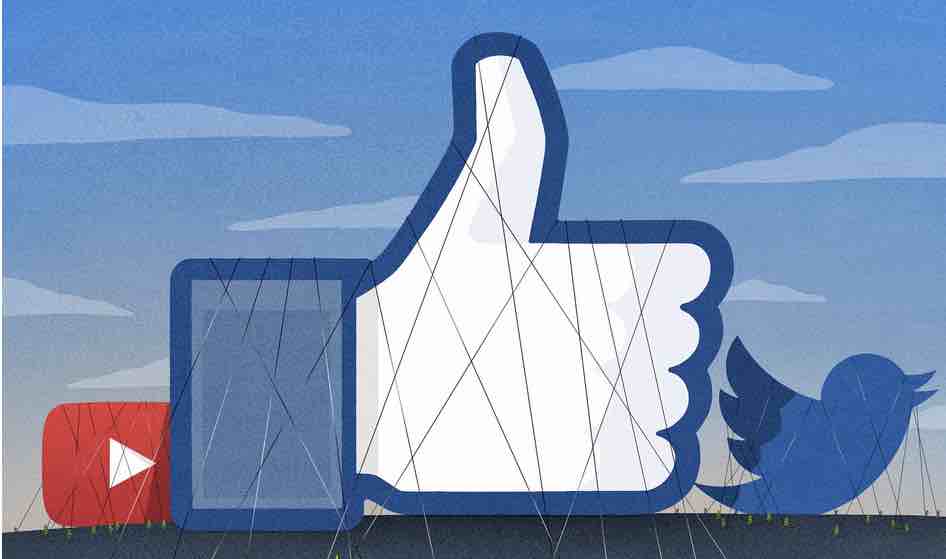Look at a thousand of the millions of Facebook ads Donald Trump has run, and it’s hard to believe that they represent a winning strategy. They recycle the same imagery and themes, over and over: Trump, photoshopped in front of a flag, points a finger. Trump claps before an audience. Trump gives a thumbs-up, or smiles at a microphone. Each image is washed in patriotic red or blue. The text almost always issues a call to action: Buy this hat, sign this petition, RSVP to this rally.
They are notable only in their banality, and in their sheer volume. During the 2016 election cycle, Trump’s team ran 5.9 million ads on Facebook, spending $44 million from June to November alone. Hillary Clinton’s campaign ran only 66,000. In 2020, Democrats are still buying fewer ads: According to the Facebook ad archive, only Michael Bloomberg approached the ad volume of the Trump campaign, running more than 50,000 ads in February of this year, his last month in the race. During that time, Bernie Sanders bought only 8,400, Elizabeth Warren and Joe Biden even fewer. Everyone is using Facebook, but Trump is doing something different and, by most accounts, better.
Perhaps calling Facebook ads “advertising” in the first place is misleading. The pictures and text that appear on its website do indeed conform to the traditional meaning of that term. But the plumbing that selects and delivers those ads is wholly unlike what came before Facebook.
In the old days, advertisers bought guaranteed placements in print publications, on outdoor displays, or in media broadcasts. They would select these placements, in part, based on the audiences those media might reach: a glossy magazine for women interested in fashion, or a billboard that thousands of downtown commuters pass daily. At the dawn of the internet, advertisers did the same thing on websites: If a business wanted to get in front of a particular audience, it could buy space adjacent to the content that brought in that audience. Eventually, it could also buy space atop search results, bidding for placement based on terms typed into Google.
Facebook upended that. A “Facebook ad” is less an ad and more a machine for producing ads. Instead of paying to put particular media in front of a specific audience, an advertiser now pays Facebook to deliver a selected outcome from a certain stripe of people. For example, a clothing manufacturer might pay Facebook for webpage visits from women in their 30s who live in Los Angeles, or for likes by parents wit
h college degrees whose online behavior is similar to that of users who had previously made purchases. How those ads get to which matching users is up to Facebook. Given some starting information, its system learns how to tune the delivery of the ad, in relation to all the other advertisers out there. In short, Facebook chooses which ads will be shown to whom at what price.
This utterly changes what it means to create and deploy advertising. Today’s advertisers simply assemble the raw information—data about actual and potential customers—that lets Facebook do the work on their behalf. When those ads successfully push users to take action, those actions generate ever more data, which in turn get funneled right back into Facebook … to help target even more ads.




